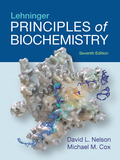
Concept explainers
(a)
To determine: The electron donor in reaction:
(1)
(2)
(3)
Introduction:
(a)
Explanation of Solution
Explanation:
The electron donor is the chemical species in a
In reaction (1)
In reaction (2)
In reaction (3)
(b)
To determine: The electron acceptor in reaction:
(1)
(2)
(3)
Introduction:
Oxidation-reduction reactions are those reactions which involve the change in the oxidation state of participating atoms. These reactions involve the transfer of electrons. The chemical compound from which electron is removed is termed as oxidized and in which electron is added is said to be reduced.
(b)
Explanation of Solution
Explanation:
The electron acceptor is the chemical species which accepts electron from the donor species and becomes oxidized. Since electron acceptor accepts electron they are also known as oxidizing agent.
In reaction (1)
In reaction (2)
In reaction (3)
(c)
To determine: Conjugate pair in reaction:
(1)
(2)
(3)
Introduction:
Oxidation-reduction reactions are those reactions which involve the change in the oxidation state of participating atoms. These reactions involve the transfer of electrons. The chemical compound from which electron is removed is termed as oxidized and in which electron is added is said to be reduced.
(c)
Explanation of Solution
Explanation:
Conjugate pair is the pair of two chemical species in which one is the electron donor and another is the electron acceptor species.
In reaction (1)
In reaction (2)
In reaction (3)
(d)
To determine: The reducing agent in reaction
(1)
(2)
(3)
Introduction:
Oxidation-reduction reactions are those reactions which involve the change in the oxidation state of participating atoms. These reactions involve the transfer of electrons. The chemical compound from which electron is removed is termed as oxidized and in which electron is added is said to be reduced.
(d)
Explanation of Solution
Explanation:
The reducing agents are those chemical species which donate electron and they become oxidizing, thereby reducing it.
In reaction (1)
In reaction (2)
In reaction (3)
(e)
To determine: The oxidizing agent in reaction:
(1)
(2)
(3)
Introduction:
Oxidation-reduction reactions are those reactions which involve the change in the oxidation state of participating atoms. These reactions involve the transfer of electrons. The chemical compound from which electron is removed is termed as oxidized and in which electron is added is said to be reduced.
(e)
Explanation of Solution
Explanation:
The oxidizing agents are those chemical species which accepts electron, thereby themselves becoming reduced and oxidizing the other species.
In reaction (1)
In reaction (2)
In reaction (3)
Want to see more full solutions like this?
Chapter 19 Solutions
EBK LEHNINGER PRINCIPLES OF BIOCHEMISTR
- fill in the table and circle the active sitearrow_forwardThe two half reactions for beginning and end of the electron transport chain are given below in standard form. Calculate & for the overall process. Using the Nernst equation (AG° = -n Fo, F= 96.485 kJ/volt mol), calculate AG°. Explain the need for a stepwise process in the electron transport chain. NAD* + H+ + 2 e- = NADH ½ 0г + 2H+ + 2е- = H20 = -0.32v E = +0.82Varrow_forwardanswer the questions and the example steps should be from carbohydrates glycolysis and citric acid cycle. Please put down reactions and structuresarrow_forward
- identify the general type of reaction catalyzed and an example step from glycolisis structure for each of the following enzymes/ co factor Kinase, isomerase, mutase, dehydrogenase, NAD+ , FADarrow_forwardfill in the blanks with the missing structures and give namesarrow_forwardfill in the table and identify the general type of reaction catalayzed and an example step from the structures in the second page so you will answer the questions from the first page the second one is just a reference urgently!arrow_forward
- Please draw out the molecular structures of each molecule and show how each enzyme + cofactor would affect the following molecule in the human metabolic pathway. (This is a metabolic map)arrow_forwardPlease draw out the molecular structures of each molecule and show how an enzyme + cofactor would affect the following molecule in the human metabolic pathway to create energy.arrow_forwardPlease draw out the molecular structures of each molecule and show how each enzyme + cofactor would affect the following molecule in the human metabolic pathway.arrow_forward
- Please draw out the mechanism with curved arrows showing electron flow. Pyruvate is accepted into the TCA cycle by a “feeder” reaction using the pyruvate dehydrogenase complex, resulting in acetyl-CoA and CO2. Provide the mechanism for this reaction utilizing the TPP cofactor. Include the roles of all cofactors.arrow_forwardPyruvate is accepted into the TCA cycle by a “feeder” reaction using the pyruvate dehydrogenase complex, resulting in acetyl-CoA and CO2. Provide the mechanism for this reaction utilizing the TPP cofactor. Include the roles of all cofactors.arrow_forwardThe mitochondrial ATP synthase has 10 copies of the F0 subunit “c”, and the [H ] in the mitochondrial inner membrane space (IMS) is 6.31 x 10-8 M and the [H + ] in the matrix is 3.16 x 10-9 M. Calculate the minimum membrane potential (∆Ψ) necessary to make ATP synthesis thermodynamically favorable. [Assume ∆G' ofphosphate hydrolysis of ATP is - 45 kJ/mol.]arrow_forward
 BiochemistryBiochemistryISBN:9781319114671Author:Lubert Stryer, Jeremy M. Berg, John L. Tymoczko, Gregory J. Gatto Jr.Publisher:W. H. Freeman
BiochemistryBiochemistryISBN:9781319114671Author:Lubert Stryer, Jeremy M. Berg, John L. Tymoczko, Gregory J. Gatto Jr.Publisher:W. H. Freeman Lehninger Principles of BiochemistryBiochemistryISBN:9781464126116Author:David L. Nelson, Michael M. CoxPublisher:W. H. Freeman
Lehninger Principles of BiochemistryBiochemistryISBN:9781464126116Author:David L. Nelson, Michael M. CoxPublisher:W. H. Freeman Fundamentals of Biochemistry: Life at the Molecul...BiochemistryISBN:9781118918401Author:Donald Voet, Judith G. Voet, Charlotte W. PrattPublisher:WILEY
Fundamentals of Biochemistry: Life at the Molecul...BiochemistryISBN:9781118918401Author:Donald Voet, Judith G. Voet, Charlotte W. PrattPublisher:WILEY BiochemistryBiochemistryISBN:9781305961135Author:Mary K. Campbell, Shawn O. Farrell, Owen M. McDougalPublisher:Cengage Learning
BiochemistryBiochemistryISBN:9781305961135Author:Mary K. Campbell, Shawn O. Farrell, Owen M. McDougalPublisher:Cengage Learning BiochemistryBiochemistryISBN:9781305577206Author:Reginald H. Garrett, Charles M. GrishamPublisher:Cengage Learning
BiochemistryBiochemistryISBN:9781305577206Author:Reginald H. Garrett, Charles M. GrishamPublisher:Cengage Learning Fundamentals of General, Organic, and Biological ...BiochemistryISBN:9780134015187Author:John E. McMurry, David S. Ballantine, Carl A. Hoeger, Virginia E. PetersonPublisher:PEARSON
Fundamentals of General, Organic, and Biological ...BiochemistryISBN:9780134015187Author:John E. McMurry, David S. Ballantine, Carl A. Hoeger, Virginia E. PetersonPublisher:PEARSON





